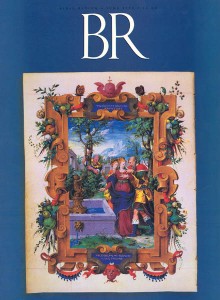When we study an ancient text of the Greek New Testament, how can we identify its sources, its possible composite nature, and the author’s contributions to the traditions used in composing it? Scholars call the methods for answering this question “tradition analysis,” and they divide it into three types: source, form and redaction criticism.
Source criticism, developed between 1863 and 1924, asks about a text: How much of the New Testament material was already in existence before the writers set about their task? Source critics assume that a high proportion of the material in the Synoptic Gospels (Matthew, Mark and Luke) came from earlier literary sources. The dominant hypothesis explaining the literary relationships among Matthew, Mark and Luke is called the “Two-Document Hypothesis” because it posits the priority of Mark—subsequently used by Matthew and Luke—plus the existence of a sayings source (called “Q”) also used by Matthew and Luke. Alternative theories—which argue either for the priority of Matthew or of Luke—make Synoptic criticism exceedingly complex but still relevant for exegesis. At its simplest, source criticism demands that we take seriously the high degree of originality shown by all these Evangelists, an originality so great that each of the Synoptic Gospels has been viewed as having been written first!
Already a library member? Log in here.
Institution user? Log in with your IP address.

